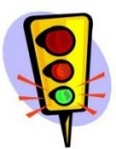
Worksheets and No Prep Teaching Resources
Reading Comprehension Worksheets
Transportation

Transportation
 Worksheets and No Prep Teaching Resources Reading Comprehension Worksheets Transportation |
 Transportation |
| edHelper's suggested reading level: | grades 7 to 9 | |
| Flesch-Kincaid grade level: | 9.15 |
| Print The "Blast Off" Engineers (font options, pick words for additional puzzles, and more) |
| Quickly print reading comprehension |
| Print a proofreading activity |
|
The "Blast Off" Engineers
By Trista L. Pollard |

|
 1
1 | 10, 9, 8, engines roaring 7, 6, 5, energy building 4, 3, 2, boosters firing 1, rocket escaping Blast Off! Ship soaring Exploring, orbiting, circling, monitoring Waiting for the thrill of a lifetime! |
 |
Create Weekly Reading Books
Prepare for an entire week at once! |
| Leave your feedback on The "Blast Off" Engineers (use this link if you found an error in the story) |
 |
Transportation
|
 |
High School Reading Comprehensions and High School Reading Lessons
|